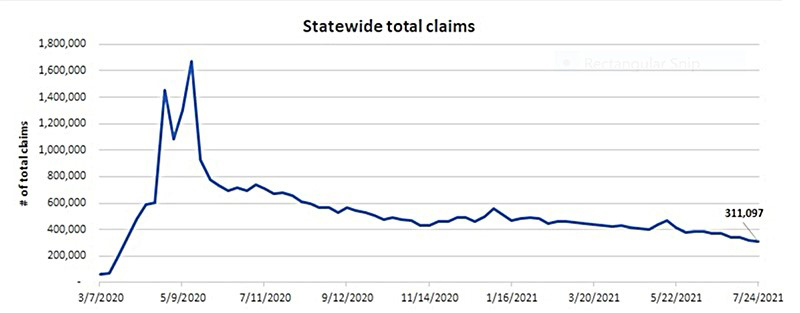The Employment Security Department (ESD) reported the lowest number of initial unemployment insurance claims since the onset of the COVID-19 pandemic, with initial claims now lower than pre-pandemic levels. Significantly, ESD also reported that the total number of claims statewide has continued to decline, with about 311,000 claimants receiving benefits. The data indicates:
- About 30,000 claimants have returned to the workforce over the past three weeks. A small number of these people may have opted to exit the workforce.
- Compared to pre-pandemic levels, about 150,000 more people are collecting UI benefits.
On August 1, the Seattle Times published an examination of factors contributing to the current shortage of workers facing many employers.

Public and private economists agree that the reinstatement of work search requirements in July, combined with higher wage levels offered by employers, had contributed to recent trends.
However, the $300 per week additional federal UI benefit may explain the large number of extended unemployment claims by workers with only a high school degree or less, who tend to have lower incomes. Although these workers make up around 25% of the state labor force, they accounted for 41.3% of all extended unemployment claims filed in the week ending July 17, according to ESD data.
But the challenge facing employers is much deeper and is not predicted to vanish entirely when the additional federal benefit ends on September 6. During the Great Recession, long-term unemployment reflected weak demand for labor in certain sectors (e.g., construction). Today, labor demand is wildly uneven between sectors. Workers face challenges with childcare costs (and availability), care for family members who may have health issues, fear about their well-being at the workplace, and changing workplace requirements.
Although ESD’s data shows positive progress with people returning to the workforce, the next turning point may be when the federal benefits end and children return to school in early September.





